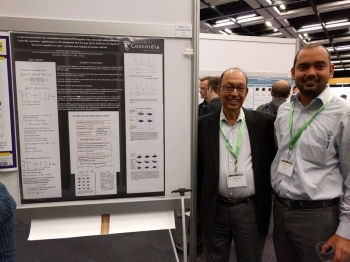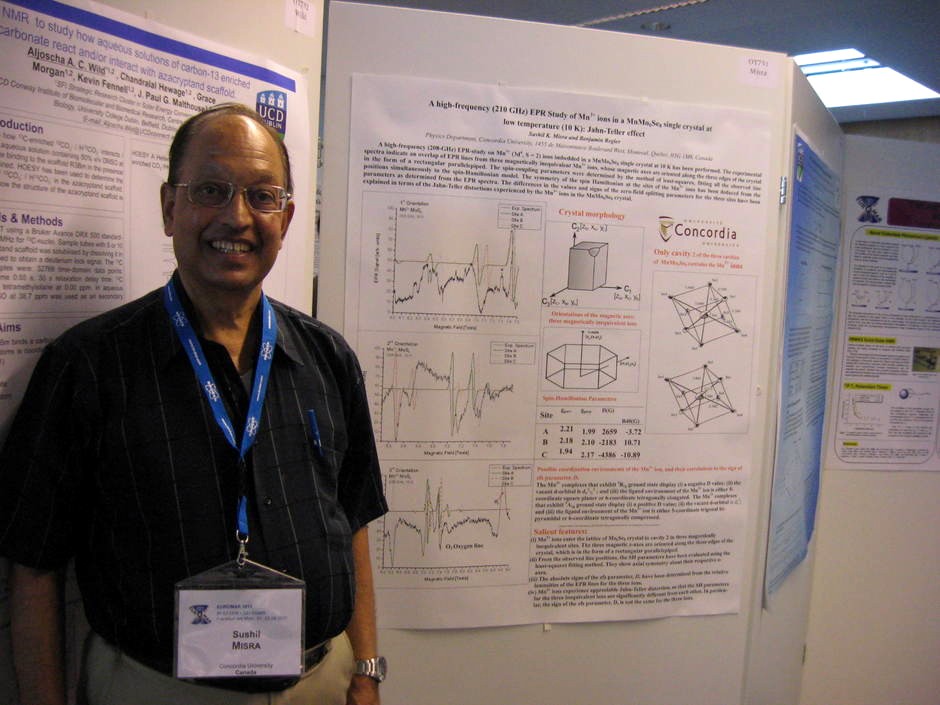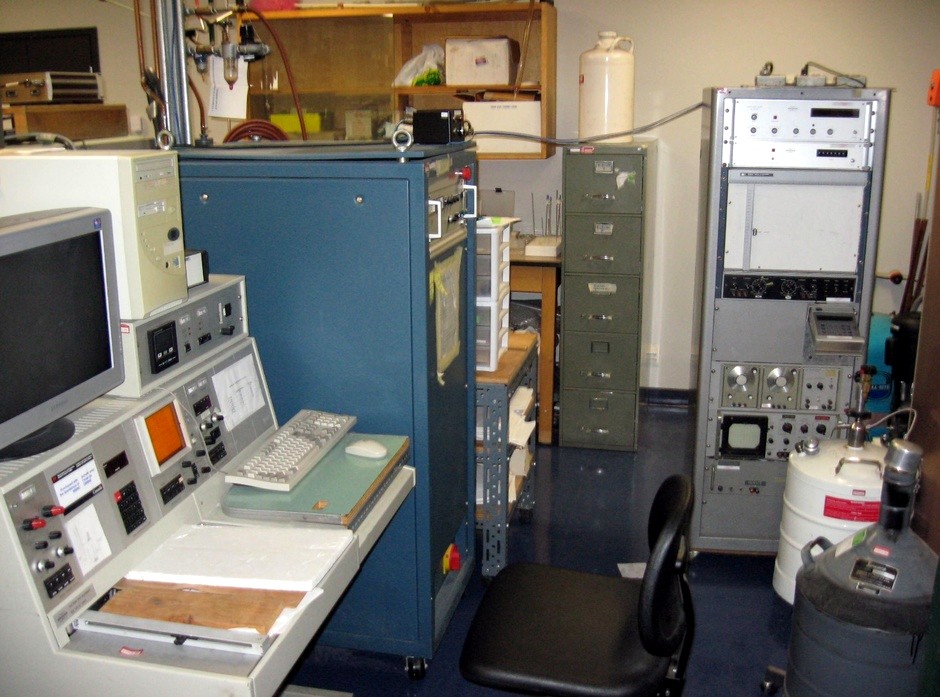The Misra research group specializes in electron paramagnetic resonance (EPR) spectroscopy which spans from analyzing samples, often by collaborating with other researchers at prominent research centres, to developing the technology itself.
The laboratory is equipped with an X-band (~9.5 GHz) and Q-band (~35 GHz) CW (continuous wave) EPR spectrometers, operating in the 4.2 – 1000 K temperature range. The group analyzes a variety of samples from biological, crystals, nano-materials and high temperature superconductors to name a few.
An example of a current project involves using EPR to understand how proteins evolved to bind with manganese, a critical aspect of photosystem II which allows photosynthesis to occur.


 Dr. Misra presenting his group's work alongside Dr. Madhur Srivastava in Quebec city, Canada on the 26th of July 2017.
Dr. Misra presenting his group's work alongside Dr. Madhur Srivastava in Quebec city, Canada on the 26th of July 2017.
 Dr. Misra presenting his group's work at EUROMAR in Frankfurt, Germany on the 26th of June 2011.
Dr. Misra presenting his group's work at EUROMAR in Frankfurt, Germany on the 26th of June 2011.



 The Misra Group's EPR spectrometer.
The Misra Group's EPR spectrometer.